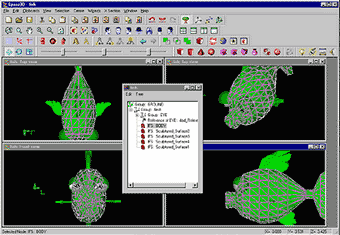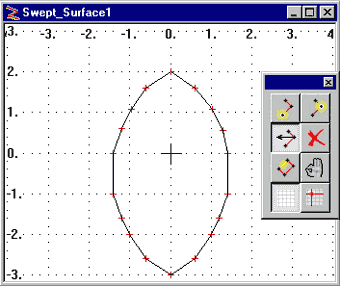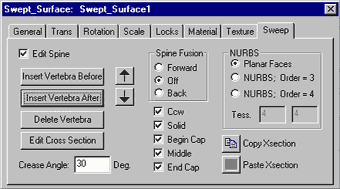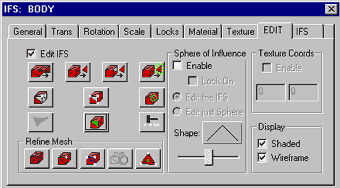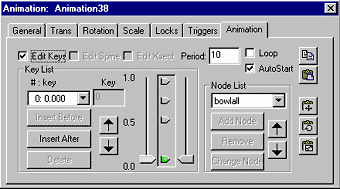by Timothy Martin, CEO and Editor-in-Chief read it |
| Send your url for review in the VirtuPortal! |
| Give us your email for regular news & updates about us |
 |
|
| Spazz3D - Tool Review by N. Polys
One of the premier up-and-coming authoring tools for Web3D content is from Virtock Technologies- Spazz3D. These guys continue to surpise and delight us with ever-improving releases of this very capable and affordable authoring tool. In our trials of this product, Version 2.3, there were a number of functionalities where Spazz really shone. The power and price are right as Spazz currently retails for $100.00, significantly less than most authoring packages on the market. This article deals with technical and conceptual issues involved with developing one's content with this hot new application. 1. Introduction: Spazz3D |
|
| 1. Introduction: Spazz3D
Spazz came onto the 3D scene a little over a year ago, and the recent releases demonstate that they have both the casual and professional user in mind. New icons, function keys, and control commands put all this program's power within easy reach. Their cooperation with Industry movers such as Shout Interactive, blaxxun (CyberTown), and the Web3D Consortium set them up as a usefull and pragmatic choice for Web3D developers. In addition to supporting advanced geometry types such as NURBS, Subdivided Surfaces, and a very capable mesh Editor, Spazz is currently the ONLY authoring tool to support Universal Media and an integrated export to VRML OR Shout3D formats. It is also currently the ONLY authoring tool to support the H-Anim (Humanoid Animation) spec 1.1- AWESOME!. With their built-in Wizards, 3D text is easy to create as well as animations for objects or cameras. 2. Workflow Orientation & Authoring Principles There are a few fundamental rules that a content developer needs to know when working with Spazz3D: VRML Import:
Authoring: There are no IndexedLineSets. Spazz has an Undo/Redo History Window for plenty of flexibility. Tip: you can instantiate Anchors and Billboards by modifying Groups through the object dialouge window. Spazz3D has easy-to-use working views and the essential drag-and-drop scenegraph window where you can reparent nodes with ease. The tool bars are dockable so you can customize the layout of your workspace. The OpenGL based browser simulator does a good job of testing your work and the de-bugger is helpful for tracking down what events trigger what.
Given these basics, we found that the capabilities of Spazz3D will compliment numerous workflows. Viewpoints are easy to add and animate, point, directional, and spot Lights are also easy to add and animate. LODs, Switches, Sensors, Background, NavigationInfo, Sounds, Fog, and Inline nodes are also easy to drop in from the tool menus. 3. Geometry Toolkit One place where Spazz is extraordinary is its 3D Text wizard. Using your system's True Type Fonts, Spazz builds 3D letterings that can be extruded to any depth, and modelled to different degrees of precision, then colored or textured. You can add rounded or angled filets to the characters for added good looks. Also in this build stage, you can scale the font in all 3 dimensions before its set to geometry. You can set characters or words to dance by a number of their pre-canned animations which create some striking effects... or course you can set them running custom animations which you keyframe yourself as well. The simplicity of building 3D lettering is a great plus for Spazz, though you will find some fonts don't build exactly when open spaces in the character are modelled as solid. I am not sure if this is Spazz or the way the different fonts are defined. Spazz3D has Boolean operations for objects that can produce various node combinations like single or multiple nodes with different Appearances inherited. When building with primitives, you can specify the number of faces each has.
When starting to model an object, it is helpful to understand the geometrical primitives that Spazz provides (beyond the standard primitives): Extrusion, SweptSurface, Revolution, NURB. In the native Spazz format you can always go back and edit these shapes' qualities. Using these geometry types, you will find that there is not much you can't imagine how to make... the first 3 give you fairly sophisticated control over cross sections and spines. For each cross-section, there is a editing window and palette that lets you add, remove, or shift points on the cross-section as well as work with them on a snappable grid.
For the objects like Extrusion or Swept Surface, you can add, remove, scale, rotate, or shift points that make up the object's spine path, giving you direct, graphical control of your shape's form- very nice!
The NURBS geometry is also highly controllable with a Nurbs Surface Control Mesh Editor. NURBS geometry can be exported to a VRML NURBS node though it will only work in Contact or Cortona browsers. If your audience is another platform, check the VRML export options and have it export as an IndexedFaceSet. For even more detailed control, you can convert any of the primitive types to an IndexedFaceSet -IFS. The IFS editor is a powerful addition to the last release, allowing you to add, delete, and move vertices. You can refine the entire mesh or refine one plane. It gives the author an amazing level of control over planes, edges and vertices. It also has a 'Sphere of Influence' tool which gives you another nice control over multiple vertices/planes you want to move.
Another great addition in Spazz3D 2.3 is a Texture Coordinate editor so you can tweak your texture maps just right- and consequently use just one texture file to cover a complex object like an avatar which is a good way to improve download time. 4. Animation Toolkit Spazz allows you a lot of flexibility when it comes to animations. There is a wizard that can lead you through the effect and period of you ani- but remember which way the axis are! There is a Camera Wizard as well which can make some good looking views easily. Last, but not least, there is the animation tool which will let you customize from the ground up. The copy and paste of object state (position, orientation) is a nice feature here. Also, when editing your keyframes, check the edit keyframe box to view and change the state at that keyframe.
Triggers are another great feature worthy of mentioning. You can sequence animations easily in the object's dialogue box by adding 'triggers' to other animations. Animations and triggers especially export as valid VRMLScript, so your content will run in all the major browsers. If you are exporting to Shout3D, your triggers are exported as special nodes. With the addition of the H-Anim toolkit, there are a number of ways that Spazz3D can aid the production of virtual characters. Some basic avatars are included and the ability to cut and paste avatar geometry, avatar animations (behaviors), and joint limit info makes production a cinch. Building custom joints, segments, and anis in your model is also supported in the toolkit. 5. Review and Summary We've highlighted some of the exceptional features of Spazz3D 2.3, a program whose functionality, simplicity, and price make it a great addition to anyone's 3D Toolkit. It is still being actively developed and we look forward to continued improvements! Version 2.4 is expected in a few days. This new version also includes a nice H-Anim tutorial. See What's New for the feature details. Visit http://www.spazz3d.com to get a trial version or to buy your own copy. And if that wasn't enough, we put together
this little VRML example
in one afternoon - 100% Spazz3D! Enjoy!
|
| Current features * Web3D 2001 * Core Web3D Book * Spazz3D: Authoring-tool * Game Programming in VRML Previous Features
|

VirtuWorlds, VirtuWorld, VirtuPortal, and 3DEZine are Trademarks of VIRTUWORLDS LLC.
No unauthorized uses are permitted.
© VirtuWorlds 1999, 2000
